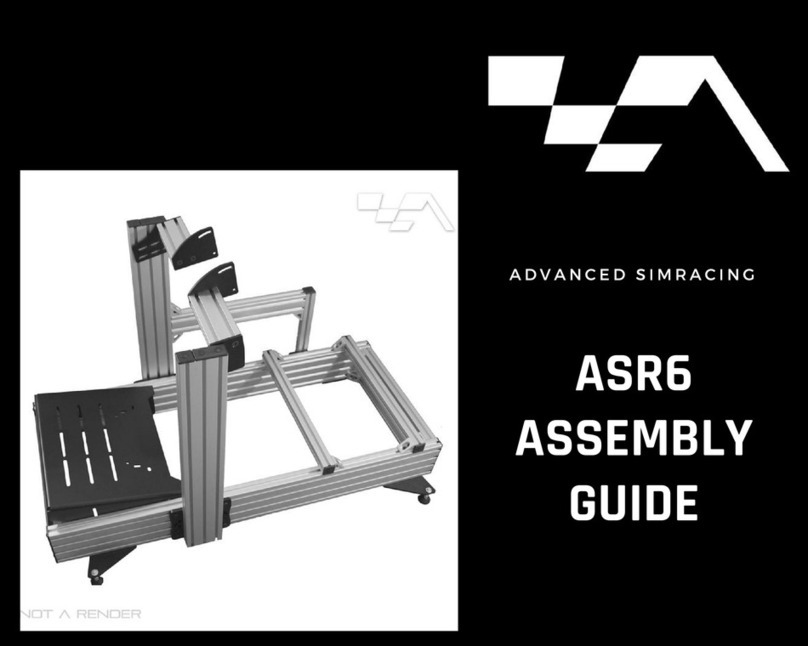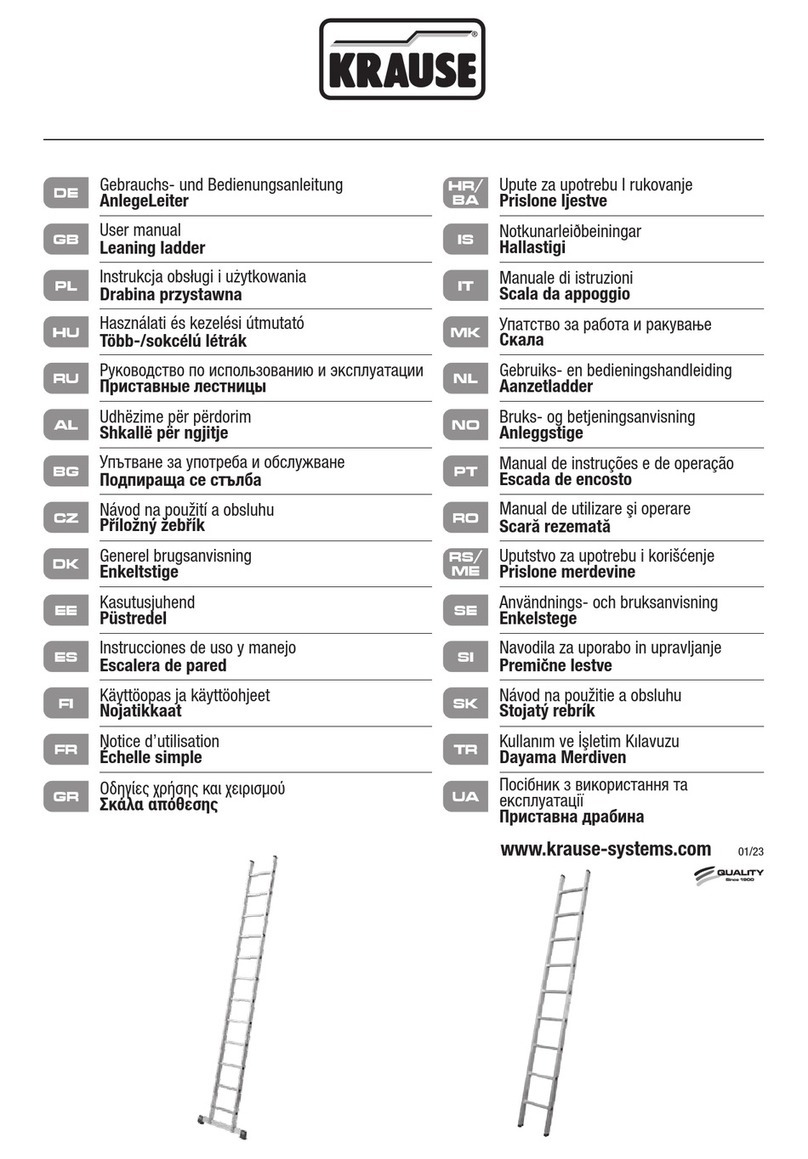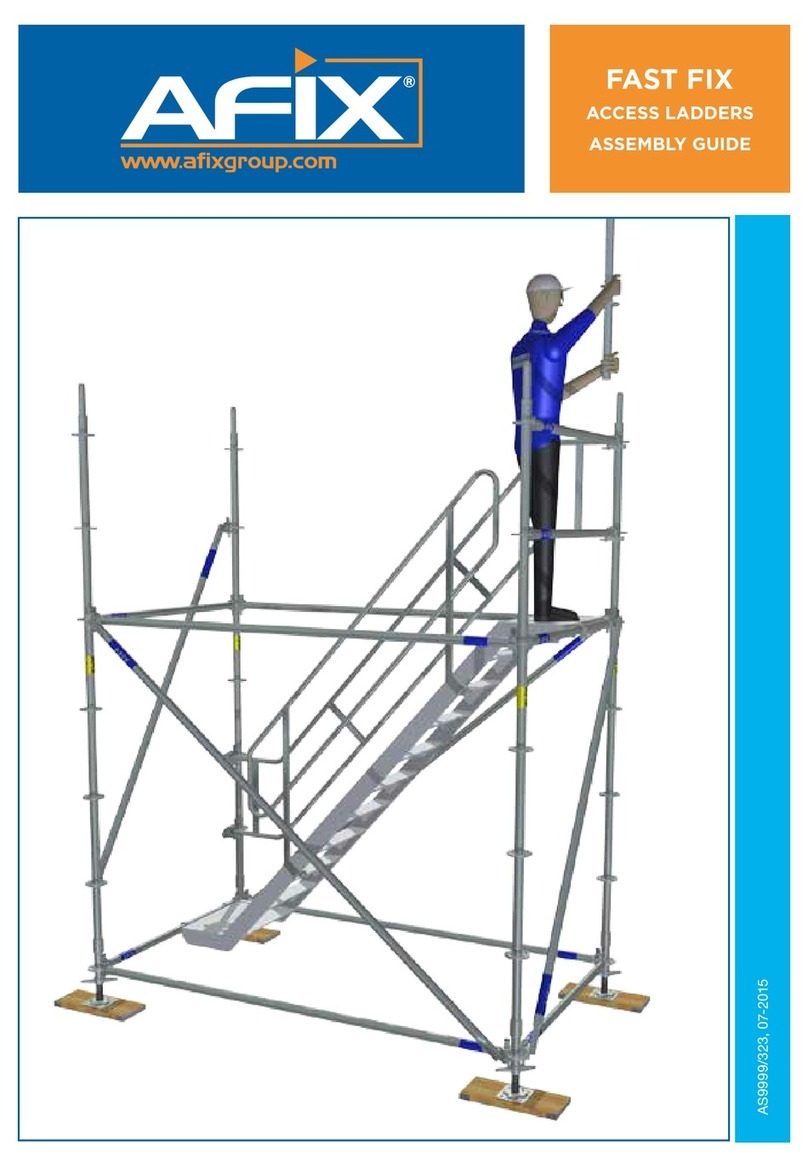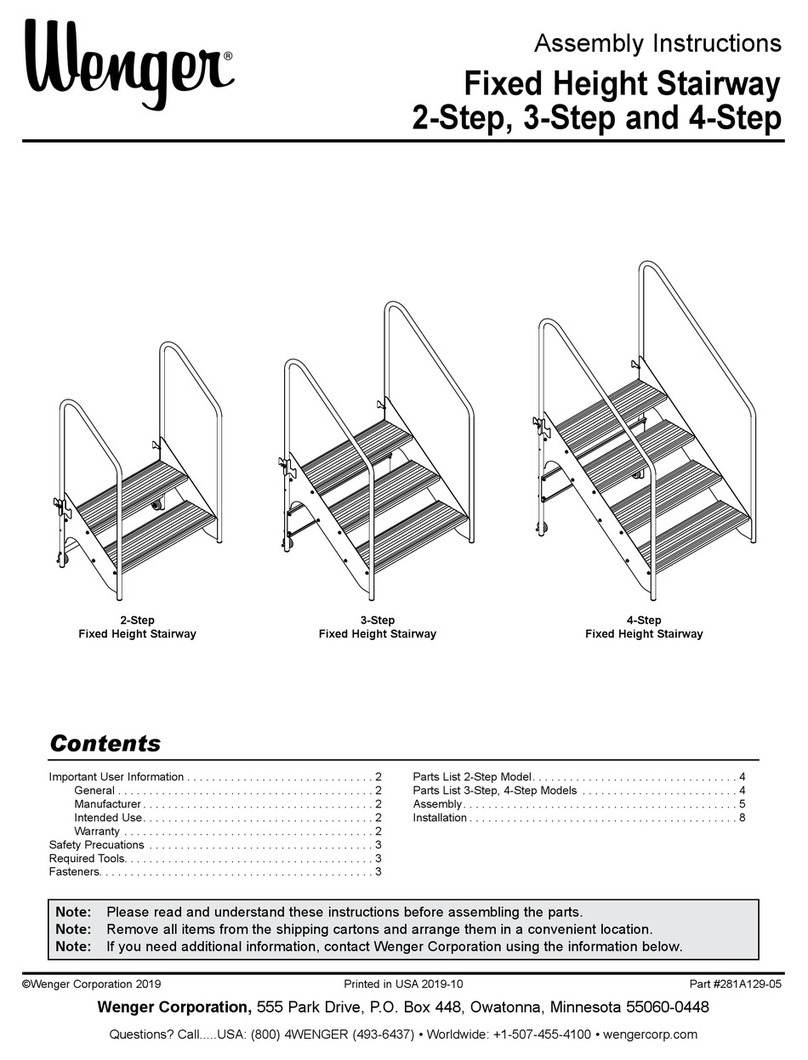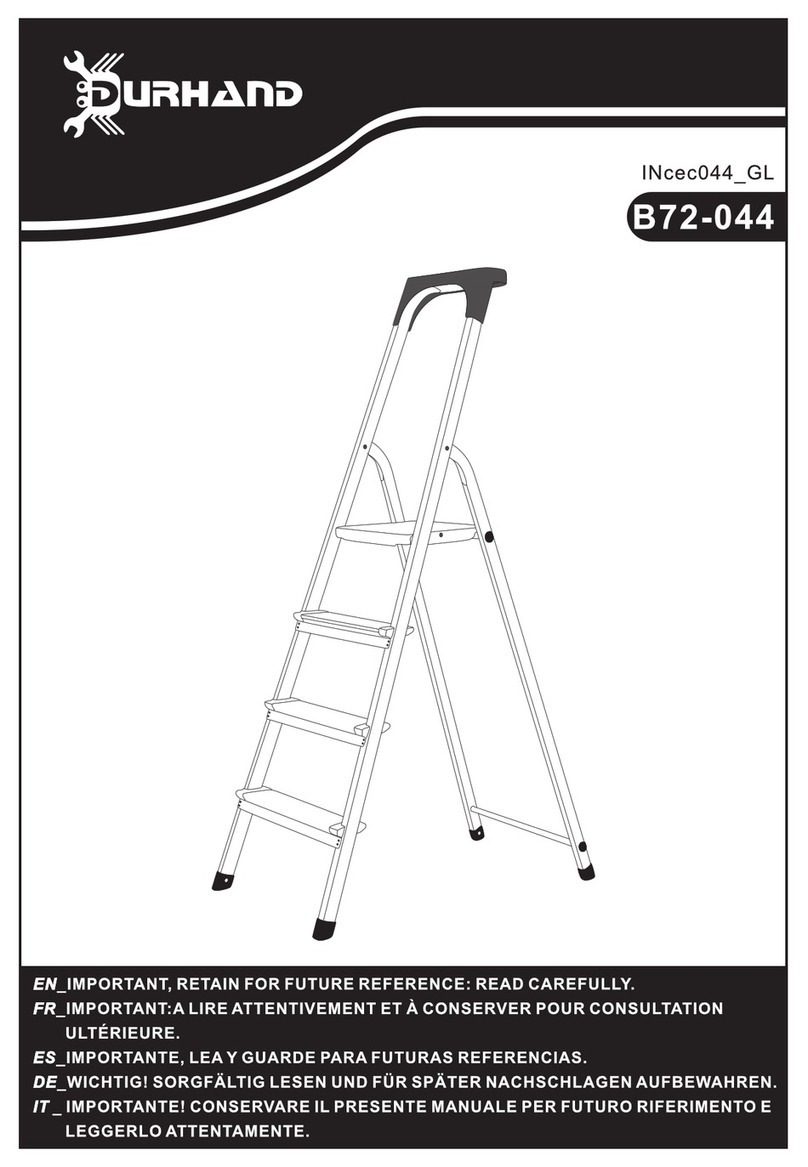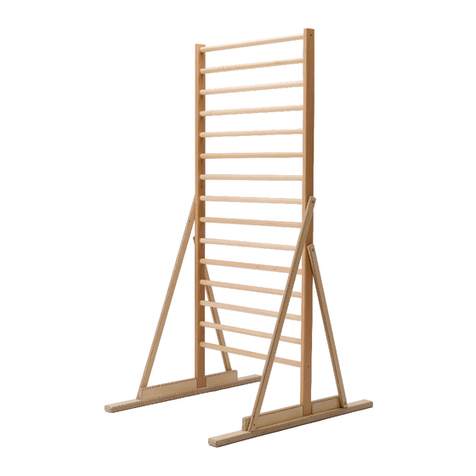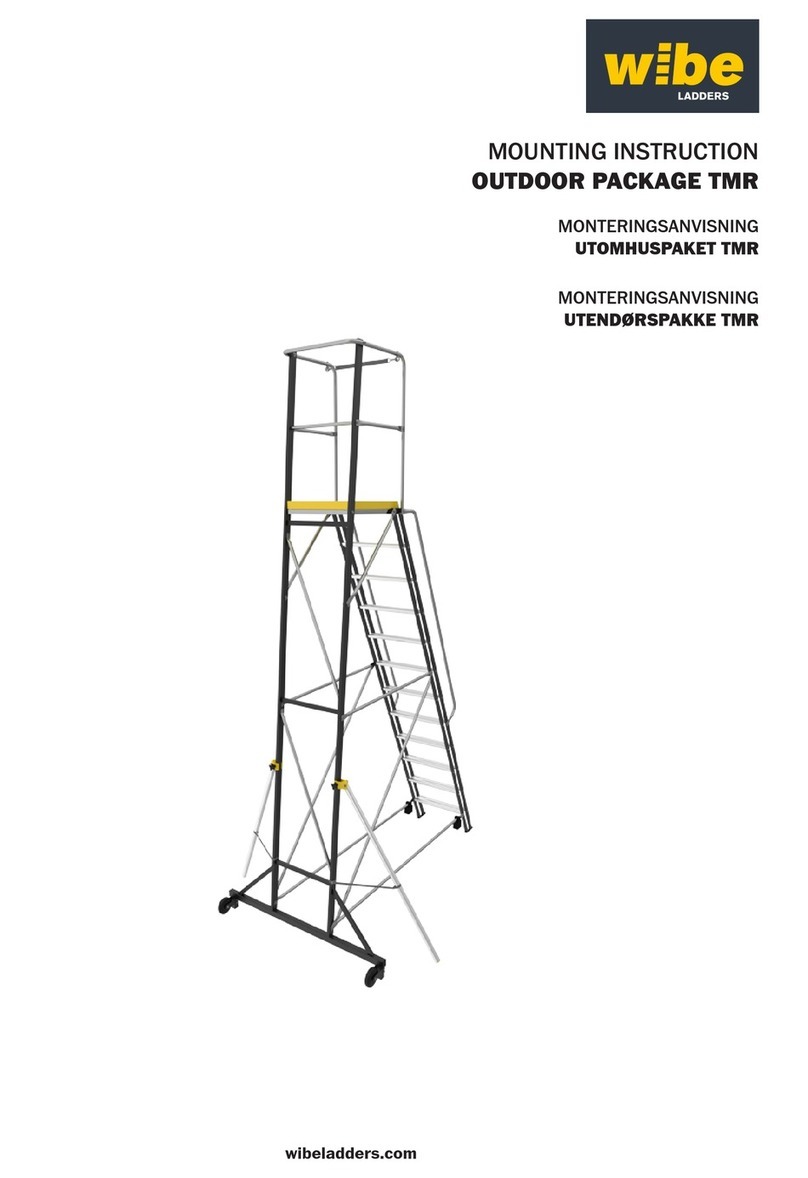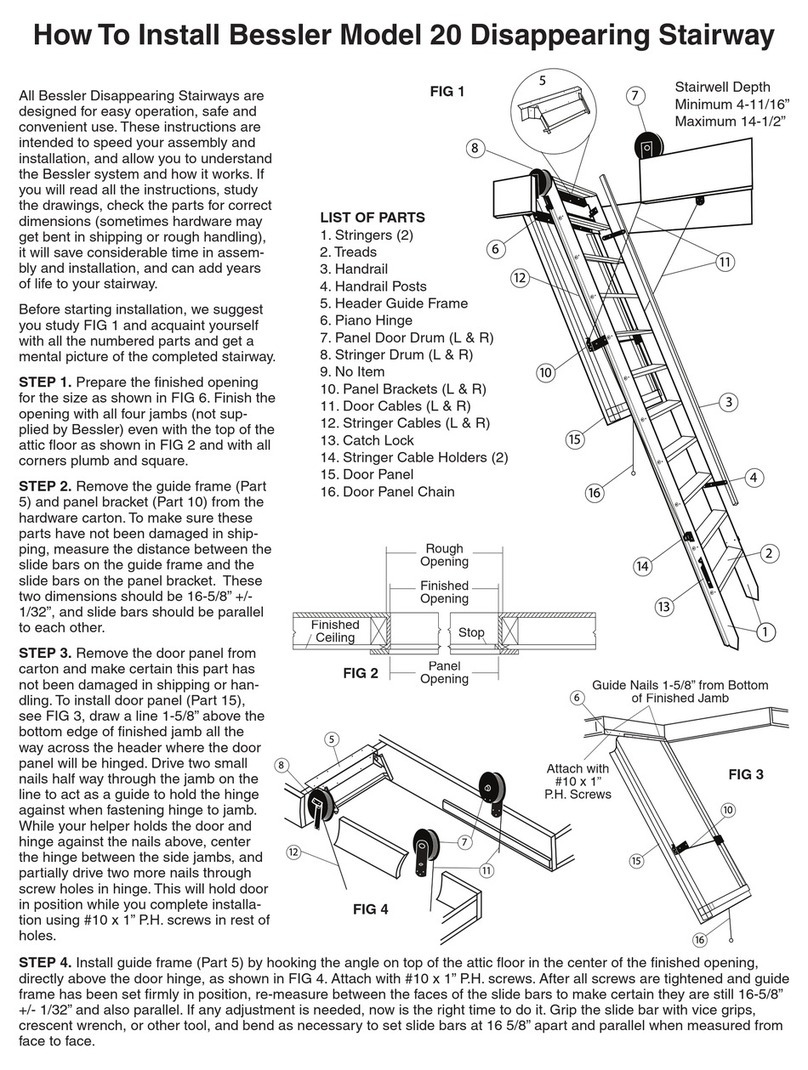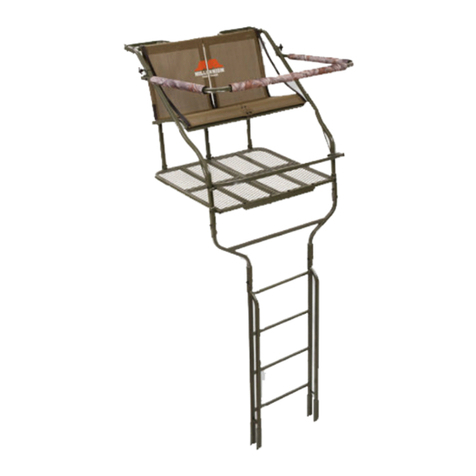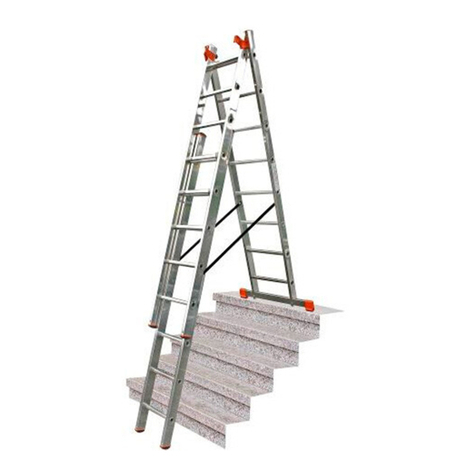
9
c) Prohibited positions: M-position, upside-down position;
d) Max. load of platform in scaffold position declared by the
manufacturer (150 kg);
e) Ensure that the hinges are locked.
5. Repair, maintenance and storage
Repairs and maintenance shall be carried out by a competent
person and be in accordance with the producer’s instruction.
NOTE A competent person is someone who has the skills to
carry out repairs or maintenance, e.g. by a training by the
manufacturer.
For repair and replacement of parts, e.g. feet, if necessary
contact the producer or distributor.
Ladder should be stored in accordance with the producer’s
instructions.
Ladders made of or using thermoplastic, thermosetting
plastic and reinforced plastic materials should be stored out
of direct sunlight.
Ladders made of wood should be stored in a dry place and
shall not be coated with opaque and vapour-tight paints.The
important considerations when storing a ladder (not in use)
should include the following:
- Is the ladder stored away from areas where its condition
could deteriorate more rapidly (e.g.dampness, excessive
heat, or exposed to the elements)?
- Is the ladder stored in a position which helps it to remain
straight (e.g. hung by the stiles on proper ladder brackets or
laid on a flat clutter free surface)?
- Is the ladder stored where it cannot be damaged by
vehicles, heavy objects, or contaminants?
- Is the ladder stored where it cannot cause a trip hazard or
an obstruction?
- Is the ladder stored securely where it cannot be easily used
for criminal purposes?
- If the ladder is permanently positioned (e.g. on scaffolding),
is it secured against unauthorized climbing (e.g. by
children)?
MAINTENANCE AND STORING YOUR LADDER:
-Keep the ladder in a clean, dry place.
-Hold the ladder firmly when carrying it.
-Never store materials on your ladder.
-Keep your ladder clean and free from any foreign matter.
-Clean the ladder after each use.
-Regularly check the parts and hinges of the ladder. Oil the
hinges regularly, but do so carefully to ensure no oil drips on
the rungs or side rails.
For regular inspection, the following items shall be taken into
account:
— check that the stiles/legs (uprights) are not bent,bowed,
twisted, dented, cracked, corroded or rotten;

